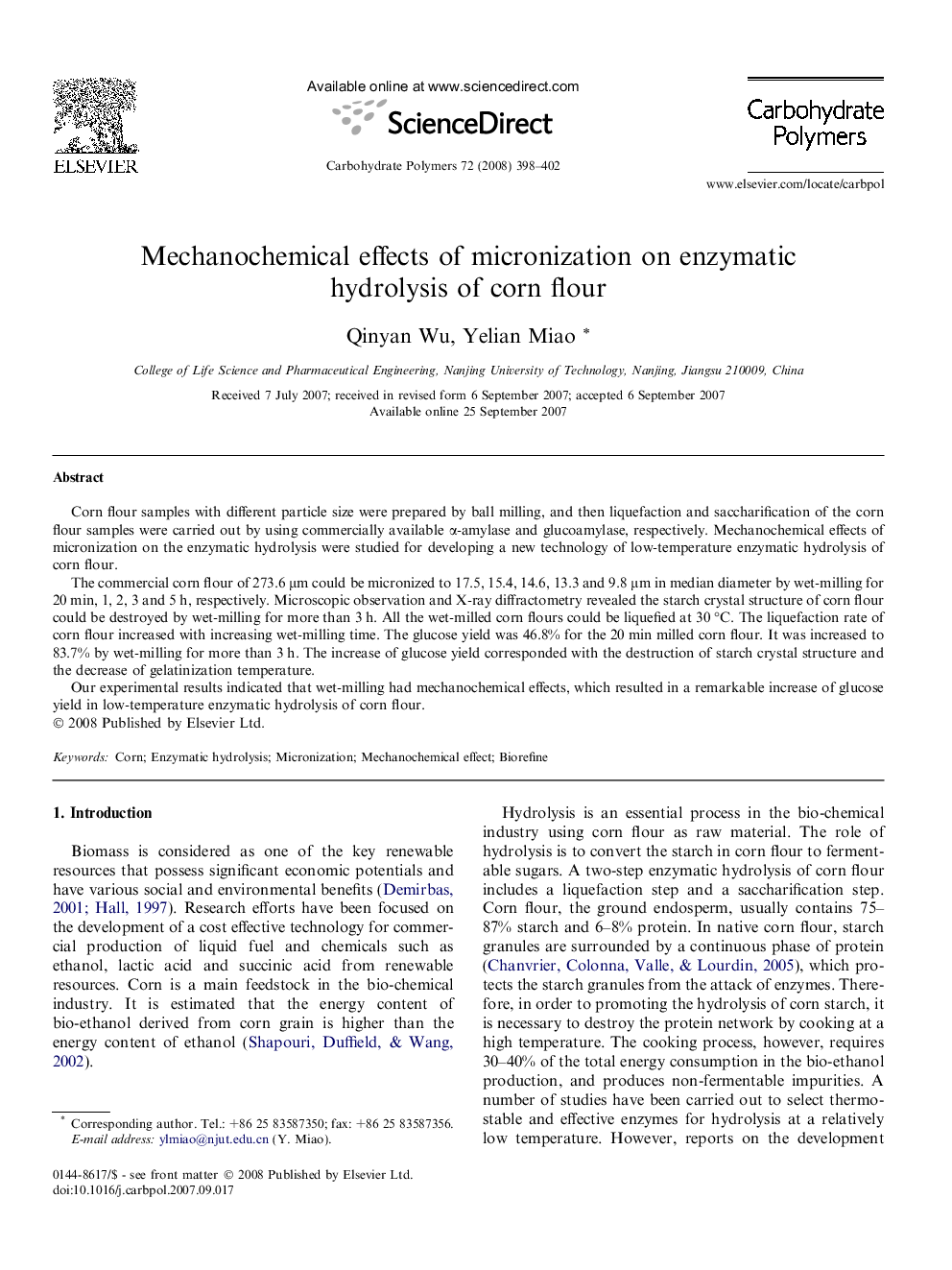| Article ID | Journal | Published Year | Pages | File Type |
|---|---|---|---|---|
| 1386483 | Carbohydrate Polymers | 2008 | 5 Pages |
Corn flour samples with different particle size were prepared by ball milling, and then liquefaction and saccharification of the corn flour samples were carried out by using commercially available α-amylase and glucoamylase, respectively. Mechanochemical effects of micronization on the enzymatic hydrolysis were studied for developing a new technology of low-temperature enzymatic hydrolysis of corn flour.The commercial corn flour of 273.6 μm could be micronized to 17.5, 15.4, 14.6, 13.3 and 9.8 μm in median diameter by wet-milling for 20 min, 1, 2, 3 and 5 h, respectively. Microscopic observation and X-ray diffractometry revealed the starch crystal structure of corn flour could be destroyed by wet-milling for more than 3 h. All the wet-milled corn flours could be liquefied at 30 °C. The liquefaction rate of corn flour increased with increasing wet-milling time. The glucose yield was 46.8% for the 20 min milled corn flour. It was increased to 83.7% by wet-milling for more than 3 h. The increase of glucose yield corresponded with the destruction of starch crystal structure and the decrease of gelatinization temperature.Our experimental results indicated that wet-milling had mechanochemical effects, which resulted in a remarkable increase of glucose yield in low-temperature enzymatic hydrolysis of corn flour.
